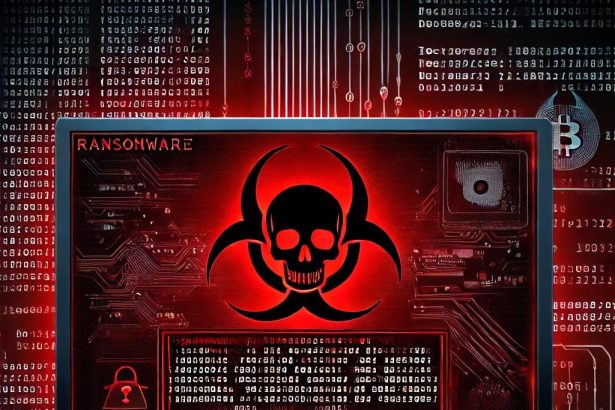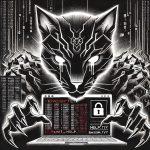The ViT Ransomware Virus is a malicious file-locking threat designed to extort money from its victims. Once installed on a device, it encrypts files and appends the .ViT extension, effectively making them inaccessible. This ransomware typically spreads through spam email attachments, fake software downloads, or visits to compromised websites.
Upon infection, users will find a ransom note titled #Read-for-recovery.txt. This message explains that their data has been encrypted and provides instructions for payment in cryptocurrency in exchange for a decryption key. Victims are often given the option to send a few small files (under 5MB) to the hackers to “prove” they have the ability to decrypt them—an old scare tactic used to gain trust and encourage payment.
ViT Ransomware Virus – Technical Summary
| Property | Details |
|---|---|
| Threat Type | Ransomware, Cryptovirus |
| Encrypted File Extension | .ViT |
| Ransom Note File Name | #Read-for-recovery.txt |
| Associated Emails | Not specified (common in ransomware but not included in this variant) |
| Detection Names | Varies by antivirus: Trojan.Ransom.ViT, W32/Filecoder.ViT!tr |
| Symptoms | Locked files, .ViT extension, ransom note on desktop |
| Damage | File encryption, potential data theft, startup registry modification |
| Distribution Methods | Malicious email attachments, pirated software, unsafe websites |
| Danger Level | High – severe data loss, system compromise, risk of secondary malware |
What Happens During a ViT Ransomware Attack?
Once ViT Ransomware gains access to your system, it immediately begins scanning for commonly used file types (documents, images, videos, etc.) and encrypts them using a strong cipher. All affected files are renamed with the .ViTextension, rendering them unreadable.
The virus then drops a ransom message—#Read-for-recovery.txt—into multiple folders. This file outlines the next steps for the victim, including how to pay the ransom. Here’s what the message typically says:
#Read-for-recovery.txt
All your files have been encrypted by ViT ransomware.
If you want to restore them, you must pay for decryption in cryptocurrency.
To prove we can restore your files, you may send us 2 small files (less than 5MB) for free decryption.
Time is limited! Do not rename encrypted files or try third-party recovery tools — this could cause permanent data loss.
Contact us for further instructions.
How Did You Get Infected?
The most common infection methods for ViT Ransomware include:
- Opening spam emails containing infected attachments.
- Downloading pirated software or cracks from torrent and warez sites.
- Visiting compromised or malicious websites that perform drive-by downloads.
- Clicking on fake software update prompts or banners.
After infiltration, ViT may also install additional malware and make changes to system directories and the Windows Registry, ensuring it launches with every reboot. It may create malicious files in:
%AppData%%Local%%Temp%%SystemDrive%%Windows%%System32%
ViT Ransomware is a serious threat that not only causes data loss but also weakens your computer’s security by opening backdoors for further attacks. Although the ransom note may promise full file recovery after payment, paying is risky and not guaranteed to work.
Manual Ransomware Removal Process
Important: Manual removal is recommended only for experienced users, as incorrect actions can lead to data loss or incomplete removal of the ransomware. If unsure, consider the SpyHunter Removal Method for a guided, automated solution.
Step 1: Disconnect from the Internet
- Immediately disable Wi-Fi or unplug the Ethernet cable to prevent the ransomware from communicating with remote servers.
- This can prevent additional encryption or further infections.
Step 2: Boot into Safe Mode
For Windows Users
- Windows 10/11:
- Press Windows + R, type
msconfig, and press Enter. - Under the Boot tab, select Safe boot and check Network.
- Click Apply, then OK, and restart your PC.
- Press Windows + R, type
- Windows 7/8:
- Restart your PC and press F8 repeatedly before Windows starts.
- Select Safe Mode with Networking and press Enter.
For Mac Users
- Restart your Mac and hold the Shift key immediately after the startup chime.
- Release the key when the Apple logo appears.
- Your Mac will boot in Safe Mode.
Step 3: Identify and Terminate Malicious Processes
Windows
- Open Task Manager by pressing Ctrl + Shift + Esc.
- Look for unusual processes consuming high CPU or memory.
- Right-click on the suspicious process and select End Task.
Mac
- Open Activity Monitor (Finder > Applications > Utilities > Activity Monitor).
- Look for unknown or high-resource-consuming processes.
- Select the suspicious process and click Force Quit.
Step 4: Delete Ransomware Files
Windows
- Open File Explorer and navigate to:
C:\Users\[Your Username]\AppData\LocalC:\Users\[Your Username]\AppData\RoamingC:\Windows\System32
- Identify and delete suspicious files (randomly named or recently modified items).
- Clear temporary files:
- Press Windows + R, type
%temp%, and hit Enter. - Delete all files in the Temp folder.
- Press Windows + R, type
Mac
- Open Finder and select Go > Go to Folder.
- Type
~/Library/Application Supportand check for unfamiliar files or folders. - Remove unknown
.plistfiles from~/Library/LaunchAgents.
Step 5: Remove Ransomware Entries from Registry or System Settings
Windows
- Press Windows + R, type
regedit, and hit Enter. - Navigate to:
HKEY_CURRENT_USER\SoftwareHKEY_LOCAL_MACHINE\Software
- Identify and delete ransomware-related registry entries.
Mac
- Open System Preferences > Users & Groups.
- Select the Login Items tab and remove any unknown startup programs.
- Check
~/Library/Preferencesfor malicious settings.
Step 6: Restore System Using a Backup or Restore Point
Windows
- Press Windows + R, type
rstrui, and press Enter. - Choose a restore point from before the infection and proceed.
Mac
- Restart your Mac and enter macOS Utilities by holding Command + R.
- Select Restore from Time Machine Backup and restore a safe backup.
Step 7: Attempt to Decrypt Files
- Check No More Ransom (www.nomoreransom.org) for available decryption tools.
- If unavailable, restore files from backups.
Automated Ransomware Removal with SpyHunter
If manual removal is too complex or risky, SpyHunter offers a safer, automated method for detecting and removing ransomware.
Step 1: Download SpyHunter
- Get SpyHunter from the official Enigma Software website.
Step 2: Install SpyHunter
- Open the downloaded file (
SpyHunter-Installer.exeor.dmgfor Mac users). - Follow the installation prompts.
- Launch SpyHunter upon completion.
Step 3: Run a Full System Scan
- Click Start Scan Now to detect malware and ransomware.
- Wait for the scan to complete and review detected threats.
Step 4: Remove Detected Ransomware
- Click Fix Threats to remove identified ransomware components.
- SpyHunter will clean your system automatically.
Step 5: SpyHunter’s Custom Malware HelpDesk
- If ransomware persists, use SpyHunter’s Malware HelpDesk for custom malware fixes.
Step 6: Restore Files
- Use backups stored on external drives or cloud storage.
- If no backup is available, check No More Ransom for decryption tools.
Preventing Future Ransomware Attacks
- Keep backups: Use cloud storage or an external hard drive.
- Install a reliable security tool: SpyHunter offers real-time protection against malware.
- Enable Windows Defender or Mac security features for additional protection.
- Avoid phishing emails and unknown attachments.
- Regularly update Windows, macOS, and installed applications.




